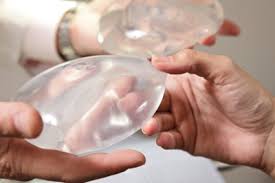Call Today ![]() 770.794.6643
770.794.6643
Prevention and Treatment of Capsular Contracture

Capsular contracture is an abnormal response of the body’s immune system in response to the presence of a foreign body. This may occur with artificial joints, pacemakers, or orthopedic prosthetics. However, perhaps the most common occurrence is following breast augmentation, when the body rejects the implants. A capsule of hard scar tissue forms around the implant; this is the body’s way of attempting to seal it off from the rest of the body.
What Causes Capsular Contracture?
Capsular contracture is thought to be more likely to occur after leaks, ruptures, infection from surgery, hematomas (blood pooling below the skin), or seratomas (pockets of blood serum that form at the incision site). However, the exact causes of capsular contracture are unknown.
How Can I tell if I Have Developed Capsular Contracture?
The breast implant may shift, change shape, or feel unnaturally hard if scar tissue has formed around the implant. It may also be swollen or feel painful to the touch. Capsular contracture is graded on what is known as a Baker scale, which follows these criteria:
- Grade I - the breast capsule has flexibility and the breast exhibits a soft feel and normal look
- Grade II - the breast still has a normal appearance, but feels firmer than normal
- Grade III - the breast has an unnaturally hard feel, and there is some distortion of the implant
- Grade IV - The capsule has hardened, resulting an abnormal shape and hard feel to the breasts
How Can I Prevent Capsular Contracture?
At your consultation appointment with one of our surgeons, we will discuss the pros and cons of the different types of implants. This will help you decide which type of implant will best suit your needs and desired aesthetic goals. Certain types of implants, such as very large implants, may be more prone to rupture, which may be a capsular contracture risk factor.
Take all antibiotics as prescribed prior to your surgery. This will dramatically reduce the potential for infection, which may set in motion the development of capsular contracture.
If you have been given a surgical drain following your procedure, be certain to empty it according to schedule. This will dramatically cut down on the possible formation of seromas at the surgical site.
Your doctor may give you instructions on post-surgical breast massage or arm exercises to perform. These keep the breast soft and supple, and may help break up potential scar-tissue formations.
What Treatments Are Available for Capsular Contracture?
You may have to undergo a capsulotomy, which loosens the scar tissue by slicing into it. This allows the implant to regain its original shape. A capsulectomy is a procedure to actually remove the entire capsule of scar tissue. For the best results with this procedure, you may also need to have the implant replaced entirely.
There are also some non-surgical procedures to break up the capsule, including massage, ultrasound, or medications known as leukotriene pathway inhibitors. These include Accolate or Singulair.
As always, talk to your doctor about your options, both before and after surgery, to reduce the risk of a capsular contracture. Our surgeons will help you make the best decision for your individual case.
Contact Crawford Plastic Surgery to schedule a consultation at our Marietta office.



Add new comment